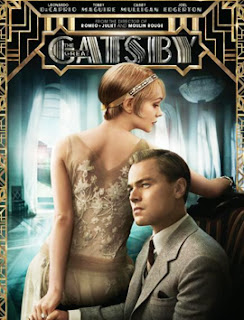It captures the raw emotion if the not the reality of the era. The reality of it is more likely akin to the quieter, more contemplative counterpart directed by Jack Clayton. But which might be better, excluding the earlier renditions such as the lost film by Herbert Brenon (1926) or Elliott Nugent (1949)? It depends almost entirely by which point of view you prefer.
You can either slip inside the head of Nick Carraway or ride along as an observer. The former is significantly stylized, with an emphasis on passion from his persecutive. The other invites you to think about the substance of the novel, a straightforward retelling that concentrates on composition.
The earlier adaptation fills in blanks, but it's all matter of fact.
If there is an irony about the "style-over-substance" slug that critics forced upon the 2013 adaption, it is that different critics admonished the 1974 adaptation for not having enough of it. And without the fairytale landscape or lavish and over-the-top parties that oversell the superfluous, the chemistry between Daisy Buchanan and Jay Gatsby never gets off the ground.
The result is a tiredness that takes place in the 1974 film, one that can be tied to Clayton for being too hung up on class and status in some instances but not enough in others. The party crowds, for example, seem too silly to contrast a world of pretenders against what Carraway sees as love.
Even with the help of the Rosecliff and Marble House mansions in Newport, Rhode Island, as stand-ins for Long Island estates, the film doesn't deliver the grandeur of a common walking tour. The shots are mostly too tight and the color too muted to make it magnificent.
Between these challenges and perhaps the limitations of Mia Farrow, who was pregnant during the shoot; Robert Redford, Bruce Dern and Sam Waterston only manage to deliver a few scenes with enough conviction to salvage it. The film was still a success, with Dern's performance the best.
There is a magic in the modern remake in its passion and urgency.
Where Luhrman does a better job with the story is in never losing sight of the story belonging to Carraway. As much as critics have called the film too stylized, it plays well to how Carraway might see it — and possibly closer to the middle ground than Clayton did. The Roaring Twenties roared.
While Tobey Maguire may make Nick Carraway a little too rural and Joel Edgerton plays Tom Buchanan more snobbish than callous, Leonardo DeCaprio delivers the most underrated performance. In playing Jay Gatsby, he finds the perfect balance between being convincing and uncomfortable. Likewise, Carey Mulligan presents Daisy Buchanan in exactly the way Carraway might see her.
He idealizes his cousin from the start, believing her to be above the rottenness of the rest of them. But as the movie progresses, she begins her transformation from a fragile victim and into a passive villain, no better than those she chooses in the end. The most authentic person in the story may be a pretender like everyone else, but only with the purest intent.
This isn't to say that the film didn't falter at times. The infusion of rap and hip hop was questionable. While it's clear that Luhrman wanted to bridge a century-old gap with the music, the decision might ultimately date his work. Jazz can be roaring enough in its own right.
The Great Gatsby Roars Along At 8.1 On The Liquid Hip Richter Scale.
The rating belongs to the 2013 adaption. The 1974 adaptation, despite telling a bit more about the story, tends to plod along as a backgrounder in comparison despite several sharp performances (and some that aren't so sharp). Luhrman hits the high water mark in making a film that can haunt someone's memory as much as the novel because he sticks with the story inside Carraway's head.
The Great Gatsby (2013) and The Great Gatsby (1974) are both available on Amazon. The 2013 and 1974 adaptations can also be rented or purchased from iTunes. Barnes & Noble carries the special edition DVD (2013) and widescreen version (1974) as well. Walmart also has an exclusive (2013). The novel, The Great Gatsby by F. Scott Fitzgerald, will be reviewed another time.
![Liquid [Hip]](https://blogger.googleusercontent.com/img/b/R29vZ2xl/AVvXsEjAFBQPqS7J0-rrttNoRYSsuwIePPZf4Nq6sqDioK1zzVQXJIQXKzq_NVNI4n6h3inuRQFBKOcJeZeSufkdHHIOxbSWyBjTjTxgKEQGyPzdwvkEEeECh4bI5YEGk4RWGUINSd7vulPQsCA/s1600-r/liquidhip.jpg)

